Exploring The Green River Fossils of Wyoming
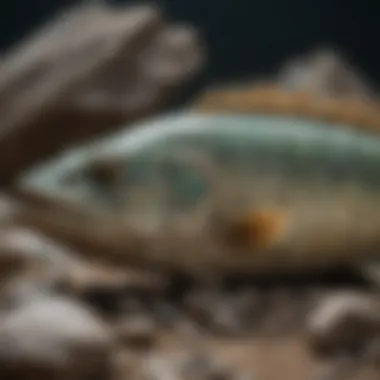
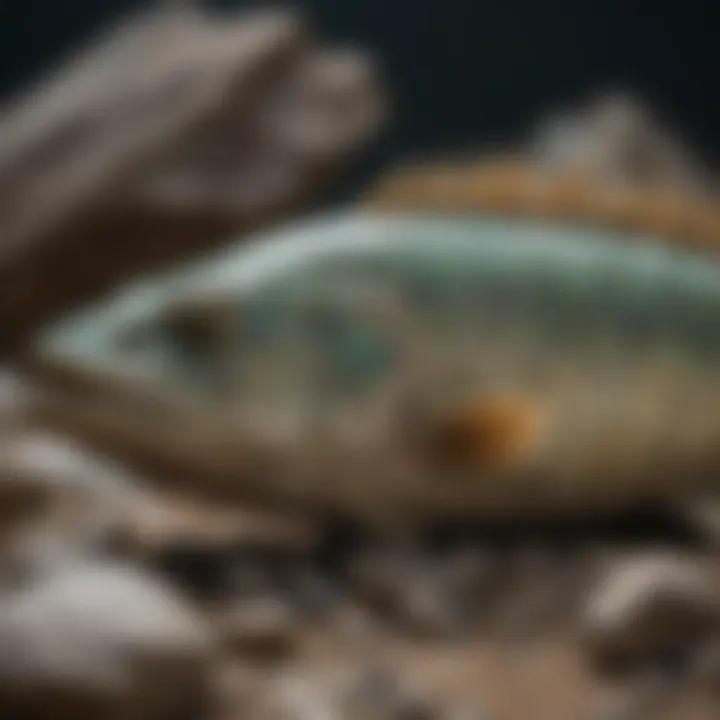
Intro
The Green River Formation is a geological marvel nestled in the heart of Wyoming. Famous for its remarkable preservation of ancient life, this formation attracts both seasoned paleontologists and enthusiastic collectors alike. Spanning several million years of Earth's history, it offers a captivating glimpse into bygone ecosystems that flourished in a lush, prehistoric lake environment.
The diverse fossils found here tell a story of an age where fish thrived in crystal-clear waters and large mammals prowled alongside verdant banks. From delicate fish scales to the remnants of majestic crocodiles, each fossil is a piece of a much larger puzzle, providing insights not only into the species that existed but also into the climatic and environmental conditions of that era.
Unraveling the nuances of the Green River Formation goes beyond mere collection; it’s about understanding the interplay between geology and paleontology. This formation plays a crucial role in our comprehension of life on Earth millions of years ago, making it an essential subject for anyone interested in the Earth's natural history. As we embark on this comprehensive exploration, we aim to illuminate the key characteristics of the formation, its historical significance, and how it continues to inspire scientific inquiry and public fascination.
The Green River Formation: An Foreword
The Green River Formation is not just a geographical feature but a treasure trove for paleontologists and fossil collectors alike. This vast area, spread across parts of Wyoming, Utah, and Colorado, serves as a time capsule, revealing secrets of life that flourished over 50 million years ago. Understanding this formation is crucial for grasping the diversity and complexity of ancient ecosystems. In this section, we’ll delve into its geological context and historical significance, laying the groundwork for a comprehensive exploration of the remarkable fossils that lie within.
Geological Context
At its core, the Green River Formation is rooted in sedimentary rock layers. These layers formed in the Eocene epoch and consist primarily of fine-grained limestone, which provides fertile ground for fossil preservation. The conditions here were once favorable for the development of extensive ancient lakes, such as Lake Gosiute and Lake Uinta. These bodies of water were teeming with life, including fish and various plant species, which subsequently died and settled to the bottom.
The sedimentation process was key to fossilization. Fine sediments blanket the remains rapidly, creating an environment low in oxygen that hinders decay. Because of such unique conditions, the Green River Formation boasts one of the most extensive and well-preserved fossil records in the world. The study of these geological shifts helps scientists understand not just what lived here, but how climate and environmental changes have influenced life throughout Earth’s history.
Historical Significance
Historically, the Green River Formation has played a pivotal role in our understanding of paleontology. The first notable excavations began in the late 1800s. At that time, this region was largely untouched, and it attracted scientists hungry for discovery. Among the first significant finds was that of freshwater fish fossils, quite distinct from the marine fossils found in other areas. This sparked a wave of research that would continually evolve over the decades.
Additionally, the Green River Fossils became a benchmark for studies on prehistoric ecosystems and the evolution of species. They pushed the boundaries of how scientists viewed the interconnections between species and their environments. Fossil discoveries, such as the iconic Pristichthys, a prehistoric fish, provided insights into vertebrate evolution and adaptation.
"The Green River Formation stands as a testament to the dynamic and often chaotic nature of prehistoric life, preserving the delicate balance of an ancient world."
In summation, the Green River Formation serves as a bridge between the distant past and our current understanding of life on Earth. Its geological composition and historical importance draw both researchers and fossil enthusiasts, making it an essential subject of exploration in paleontology.
Fossils Found in the Green River Formation
The Green River Formation has long been considered a goldmine for paleontologists and fossil lovers alike. This region teems with remnants of life that showcase a snapshot of an ancient ecosystem, offering insights into the evolutionary processes of millions of years past. Understanding the variety of fossils unearthed here is not just about cataloging what existed; it’s about piecing together a complex story of life that once flourished in these waters and alongside its banks. The significance of the fossils found in this formation cannot be overstated, as they provide windows into the past and show how these organisms adapted to their environments.
Types of Fossils
Fish Fossils
Fish fossils form a cornerstone of the Green River's fossil record. The preservation of fish in this region is particularly notable; many of them are so well-preserved that they retain fine details like scales, fins, and even stomach contents. One prominent example is the Knightia, a small schooling fish that reveals much about the aquatic environment of the time. The sheer volume and diversity of fish fossils, including species like Diplomoceras and Mioplosus, make them integral to understanding past lake ecosystems.
The specificity in the details of these fish fossils allows researchers to gauge not just the species composition but also the ecological interactions of these ancient waters. With the ability to study them in fine detail, fish fossils turn out to be a popular choice for both study and display.
Plant Fossils
Plant fossils from the Green River Formation present a different yet equally fascinating narrative. They provide crucial data on past climates and habitats. Among these fossils, leaf impressions of Hickory and Sequoia are often highlighted. These specimens underscore how plant life adapted over eons to changing environmental conditions.
The resilience and variety in plant fossils emphasize the lushness of ancient ecosystems, painting a picture of abundant vegetation that supported various life forms. The unique preservation conditions in the region contribute to the detail available in plant fossils, making them a valuable resource for understanding paleoecology.
Invertebrate Fossils
Invertebrate fossils, encompassing everything from gastropods to insect remains, add another layer of understanding to the ecosystems of the Green River. While fish and plants may dominate the narrative, these smaller creatures often reveal intricate details about food webs and ecological interactions. A prominent specimen, the Eocene era Mayfly, illustrates the water quality of ancient lakes and rivers, hinting at vibrant benthic communities.
Invertebrates also serve as indicators of climate fluctuations and habitat changes, making their fossils crucial components of any paleontological investigation in this formation.
Reptiles and Birds
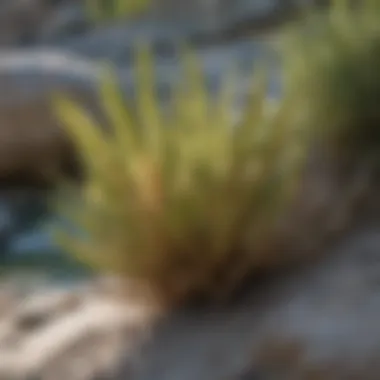

The presence of reptiles and birds in the fossil record adds yet another dimension to the Green River's story. Fossils of turtles or even early birds such as Hesperornithoides provide insights into the transition of life from aquatic to terrestrial realms. The findings of these reptiles and birds elucidate how these animals adapted and thrived in a predominantly aquatic ecosystem.
These fossils show distinct traits associated with their lifestyles, helping us understand evolution and ecological roles. They are significant not just for their rarity but also for what they can teach us about the evolutionary journey from water to land.
Notable Discoveries
Fossil Fish Species
Some fossil fish species found here, like Coelacanths, captivate both scientists and collectors alike. Their likeness to modern species creates a unique bridge to our current understanding of evolutionary history. Given their ancient lineage, they provide critical data on lineage preservation and adaptation through various geologic epochs.
Fossil Flora Characteristics
Fossil flora characteristics often leave paleobotanists astounded. They help establish connections between climate and plant evolution. Insights gained from the examination of flora help piece together ancient climate shifts, serving as indicators of broader environmental changes that affected various life forms in the Green River ecosystem.
Paleoenvironment of the Green River Formation
Understanding the paleoenvironment of the Green River Formation is akin to pulling back the curtain on a vibrant tapestry of life that existed millions of years ago. This exploration peels away layers of geological history, giving insight into how ancient ecosystems formed, thrived, and changed over time. By piecing together this puzzle, we gain a clearer picture of not only the organisms that inhabited these areas, but also the environmental conditions that supported such rich biodiversity.
Ancient Lakes and Ecosystems
The Green River Formation primarily consists of sedimentary rocks formed around ancient lakes, which played a significant role in the preservation of fossils. Imagine a vast expanse of water dotted with lush vegetation along its shores — a paradise for aquatic and terrestrial life alike. These lakes were not just stagnant bodies of water; they sustained dynamic ecosystems.
The primary lakes, namely Lake Gosiute and Lake Uinta, acted as repositories for organic material, which later transformed into fossils as sediments piled up over eons. Fish thrived in these waters, including species like Diplomoceras, which is notable for its unique, coiled shell. This environment further supported a variety of plants, from delicate ferns to sturdier conifers, alongside a whole cast of invertebrate life. The sheer variety of fossils unearthed provides a glimpse into a flourishing ecosystem, where interactions between species shaped the trajectory of life.
"Fossils found in the Green River Formation speak volumes about the interaction between ancient ecosystems and their environments."
The alternating layers of sediment reflect changing conditions within these lakes, such as shifts in water levels and sediment supply due to climatic fluctuations. As these dynamics played out, they contributed to the impressive fossil record that paleontologists study today. Understanding this history not only satisfies scientific curiosity but also provides valuable lessons about ecosystem resilience under various stresses.
Climate Conditions
Climate has been a critical driver in shaping the paleoenvironment of the Green River Formation. During its active geological period, approximately 56 to 34 million years ago, the climate was significantly different from what we experience today. It was a time characterized by warmer, subtropical conditions, conducive to the flourishing of both fauna and flora.
The presence of tropical plant types, specifically palm trees and broadleaf evergreens, indicates higher average temperatures than today. These climate conditions allowed the lakes to remain abundant in nutrients, fostering diverse aquatic life. Additionally, seasonal fluctuations would have occurred, altering the chemistry of the lakes and affecting species distribution and competition.
As researchers meticulously study sediment samples, they uncover vital climate indicators. The isotopic data, for example, gives insights into precipitation patterns and water temperatures during that era. Such findings are not just academic; they serve as reminders of how climate can dictate the fate of ecosystems, a lesson that resonates today as we face extreme climatic changes.
In summary, the paleoenvironmental study of the Green River Formation routes us through an intricate tale of lakes that once nurtured an abundance of life under a warm climate. These factors—ancient lakes, ecosystems, and climate conditions—not only shaped the fossil record but also enrich our understanding of historical environmental frameworks, which continue to inform our approach to conservation and climate policy today.
Fossilization Processes
The journey from a living organism to a fossil is an intricate tale that reveals the delicate interplay between environmental factors and biological remains. Understanding fossilization processes holds paramount importance in the examination of the Green River Formation, revealing how the remarkable preservation of prehistoric life has occurred in this region.
During fossilization, not every creature or plant leaves behind a fossil. That's because various conditions must align perfectly for this transformation to take place. Unpacking these conditions allows rock and fossil collectors to better appreciate the stories behind their finds, and it also sheds light on how these ancient ecosystems thrived.
Conditions Favoring Fossil Preservation
Fossil preservation is no simple feat. The conditions must be just right to minimize decay and ensure that remains endure through the ages. Here are several essential factors that favor fossil preservation in the Green River Formation:
- Rapid Burial: A swift covering of sediments can shield biological remains from scavengers, oxygen, and water, which would otherwise cause decomposition. In the Green River lakes, the sedimentation rates were notably high, helping to entomb organisms shortly after their demise.
- Anoxic Conditions: The absence of oxygen is a game-changer for fossilization. In certain parts of the Green River, the layering of sediments led to low-oxygen environments. This created a natural barrier that stifled decay and promoted the preservation of fine details, essential for understanding the organisms better.
- Mineral-rich Waters: When organic material encounters mineral-laden waters, a transformation begins. The minerals seep into the remains, crystallizing and forming fossils. The Green River was host to various minerals which played a big role in how fossils formed, especially the famous Eocene fish fossils found here.
It's also worth noting that not every fossil is created equal. Some boast remarkable detail, while others might seem like mere shadows of their former selves. This variability can largely be attributed to the conditions in which they were preserved.
Diagenesis in the Green River Formation
Once a fossil has formed, it enters a stage known as diagenesis. This term refers to the physical and chemical changes that occur after burial. In the Green River Formation, diagenesis affected fossil specimens via several pathways:
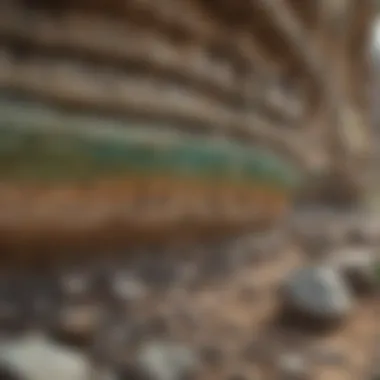

- Compaction: Over time, layers of sediment build up. The pressure compresses the underlying layers, which can change the fossil’s structure. In the Green River, the lake sediments underwent significant compaction, which may have altered some fossils' original dimensions, making them thinner and denser.
- Chemical Alterations: The minerals present in sediment can react with the organic material. This chemical fusion can enhance or diminish the visibility of features in a fossil. For example, certain minerals can create vibrant coloration in fossils, which notably affects how collectors perceive their value.
- Fossil Alteration: Some fossils might not remain entirely unchanged. During diagenesis, fossils can undergo recrystallization or even become partially dissolved, leading to a loss of detail. Understanding this process provides deeper insight into the fossil’s journey—from the time it was a living organism to its current state.
In summary, fossilization is not merely about luck; it's a complex mixture of environmental factors, biological remains, and chemical transformations. Recognizing these processes helps us appreciate the sophistication of the ancient ecosystems once found in the Green River Formation, and it offers a lens for collectors to understand their treasures better.
"The preservation regimes in the Green River offer invaluable insights into how ancient ecosystems operated and evolved, bringing the past to life bit by bit."
The careful study of fossilization processes not only enriches the scientific narrative but also enhances the collector's experience, ultimately making the journey into the past remarkably tangible.
Collecting Green River Fossils
The act of collecting fossils from the Green River Formation is a pursuit rich in both challenge and reward. It’s not just about gathering pieces of the past; it’s about understanding the intricate tapestry of ancient life that once flourished in the region. With each fossil, collectors become part of a broader narrative, those delightful whispers of prehistoric times echoing between the layers of sediment. This section dives into the essential elements surrounding fossil collection, providing guidance and insight for enthusiasts and scholars alike.
Legal Considerations
Before one steps into the dusty, fossil-rich terrain of the Green River Formation, it’s crucial to understand the legal landscape regarding fossil collection. Collectors must be aware that regulations can be strict and vary widely between public lands and private property. In Wyoming, many fossils are protected under state laws, specifically within designated parks or reserves. For instance, collecting on BLM (Bureau of Land Management) lands is often permitted, but it is always wise to check specific area regulations.
Additionally, permits may be required to collect certain specimens. Ignoring these legal guidelines can lead to hefty fines or even criminal charges. Valuing the rich geological heritage of Wyoming means adhering to these rules, which ensure that future generations can also experience the wonders of the Green River fossils.
Best Practices for Collecting
For those eager to embark on a fossil-collecting journey, establishing best practices is essential. Here are some guidelines to maximize the experience:
- Research Locations: Before heading out, find reliable resources that detail fossil-rich areas within the Green River Formation. Websites like Wikipedia can provide valuable background.
- Use Proper Tools: Pack essential tools like hammers, chisels, and protective gear. Notably, a sharp eye and a patient approach are just as valuable—some fossils hide right under our noses.
- Take Notes: Document the locations and conditions where fossils were found. This is beneficial not only for personal records but can contribute significantly to scientific understanding.
- Leave the Environment Intact: Collect only what you can ethically remove. Adhering to the practice of leaving behind the surrounding environment helps preserve the ecosystem and reduces the risk of damaging other fossils.
"Responsible collecting practices today ensure that we do not rob future generations of their opportunities to unearth the past."
Ethical Implications
As collectors sift through the remains of ancient ecosystems, ethical implications naturally arise. It's imperative to ponder the broader context surrounding fossil collecting. Firstly, the value of fossils extends beyond mere specimens; they are pivotal for scientific research and education. Commercializing these finds can sometimes undermine their educational purpose.
Moreover, collectors must consider the impact on local ecosystems. When removing fossils, especially from delicate environments, there is potential disruption to the habitat. Being mindful of the ecological consequences is paramount.
In the spirit of sharing knowledge, many collectors benefit from engaging with local communities or scientific institutions that emphasize conservation. By forming partnerships with researchers, the collected fossils can contribute to broader scientific inquiries, offering insights into historical climates and biodiversity.
Research and Ongoing Studies
Research and ongoing studies related to the Green River Formation hold significant value for both the scientific community and the general public. These studies not only enhance our understanding of prehistoric life but also illuminate the complex ecosystems that existed millions of years ago. The knowledge derived from these findings informs various fields, from paleontology to climate science. Their implications extend beyond academic discourse, offering insights that resonate deeply with rock and fossil collectors as well as educators.
Impact of Fossil Findings on Science
The fossils from the Green River Formation are a treasure trove for scientists, providing rich evidence about ancient biological systems. Every fossil discovered offers a glimpse into the past, detailing how life thrived in a unique environmental context.
- Evolutionary Insights: The diversity of fossils found here, particularly fish and plant life, reveals how species adapted over time. They serve as crucial markers in understanding evolution, illustrating changes in morphology and habitat preferences.
- Ecosystem Dynamics: Fossils tell stories about ancient lakes and wetlands. Studies of these remains help scientists piece together ecological interactions. Predatory behaviors, feeding patterns, and even plant-insect relationships are factors that can be deciphered from these remnants of life.
- Climate Change Research: The conditions captured in the sedimentary layers of the Green River Formation provide context for historical climate variations. By analyzing fossil records and sediment types, researchers can draw parallels with modern climate issues, suggesting how ancient ecosystems responded to environmental shifts.
Scientific advancements on fossil findings can inspire future generations of paleontologists, helping them understand the fragile balance of ecosystems through time.
Emerging Technologies in Paleontology
As research continues, emerging technologies are shaping the landscape of paleontological studies. It's fascinating to note how these advancements enhance our capability to analyze and interpret valuable data from fossil records.
- 3D Imaging and Scanning: Techniques such as X-ray computed tomography (CT) enable scientists to visualize the internal structures of fossils without causing damage. This has revolutionized the way we study and preserve fossils.
- Bioinformatics: The use of bioinformatics tools allows researchers to categorize and analyze large sets of genetic data from fossilized remains. This enhances our understanding of evolutionary relationships between species.
- Artificial Intelligence: Machine learning algorithms are being employed to identify and classify fossil specimens more efficiently. This can speed up data analysis and improve accuracy in understanding paleobiological patterns.
- Remote Sensing: New methods for remote sensing can evaluate fossil-rich areas without extensive excavation, reducing habitat disruption while still allowing for effective study of the strata.
In summary, the integration of cutting-edge technologies into research has fundamentally changed the way paleontologists collect and interpret data from the Green River Formation. It's an exciting time in the field, promising more discoveries that can deepen our appreciation of Earth’s prehistoric life and its evolution.
Educational Value of Green River Fossils
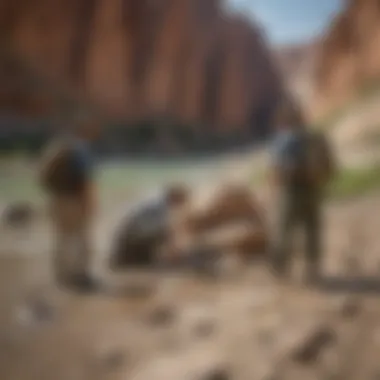

The educational significance of the Green River fossils cannot be underestimated. They serve as a window into prehistoric life, providing evidence that spans millions of years. Here are some key elements that underscore their value in educational settings:
- Understanding Evolution: The fossils found in the Green River Formation, such as ancient fish and plants, allow students and researchers alike to trace the lineage of many modern species. Understanding how life has transformed over geological time demonstrates fundamental concepts in biology and environmental science.
- Promoting Critical Thinking: Analyzing fossil specimens encourages critical analysis, which sharpens scientific reasoning skills. Students learn to examine the conditions of fossilization and the implications for past ecosystems. This critical approach helps hone research skills that transcends the classroom.
- Cultural Appreciation: The Green River fossils are not just scientific artifacts; they are part of a broader cultural heritage. They inspire stories of human curiosity and the quest for knowledge. Those who study these fossils often develop a profound appreciation for both the natural world and the rich history it encompasses.
"Fossils are the storytellers of our planet, giving us insights into ecosystems long gone and the life forms that inhabited them."
Fossils in the Classroom
Fossils from the Green River Formation lend themselves well to diverse teaching methods. Having tangible examples of ancient life compels engagement and curiosity in students. Here are several ways fossils can enhance classroom learning:
- Hands-on Learning: When students handle or examine replicas or actual fossil specimens, they create a more significant connection with the material. For example, examining a fossil fish like Diplomoceras can trigger discussions on adaptation and environment.
- Interdisciplinary Approach: Fossils catalyze connections between subjects. Teachers can integrate lessons from geology, biology, and history, exploring everything from sedimentation processes to adaptation in ancient ecosystems.
- Field Trips and Activities: Engaging students with field trips to museums or fossil sites nurtures a sense of adventure and discovery. Such experiences often spark a lifelong interest in paleontology and geology.
Public Exhibits and Museums
Museums serve as epicenters for public education on fossils. The inclusion of Green River fossils in exhibits displays their relevance not just scientifically, but socially:
- Engaging Displays: Curators design exhibits that bring ancient ecosystems to life, utilizing visuals, audio guides, and interactive elements that appeal to visitors of all ages.
- Community Involvement: Many exhibits include local history and the contributions of regional collectors, fostering community interest in preservation and appreciation of natural history.
- Workshops and Lectures: Museums frequently organize workshops that allow visitors to learn about fossil identification and preservation. Lectures by experts provide insight into the latest research, invigorating interest and discussion about future directions of paleontological study.
In sum, the Green River fossils contribute an irreplaceable resource for education, sparking curiosity and expanding understanding in learners and the public, while fostering conservation and appreciation for our natural heritage.
Conservation Efforts in the Green River Region
The importance of conservation efforts in the Green River region cannot be overstated. This area, renowned for its historical and ecological significance, is not only home to a plethora of fossils but also to delicate ecosystems that can be easily disturbed. The need for preserving these natural wonders ensures that future generations can learn from and appreciate the rich tapestry of life that once thrived here.
Protecting Natural Resources
At the heart of conservation in the Green River region is the preservation of natural resources. This includes both the fossils themselves and the surrounding environment. The delicate balance of the local ecosystem is maintained through various strategies aimed at protecting the geological features that house these ancient relics.
- Regulatory Frameworks: Protective legislation has been put into place to limit fossil collection and associated activities that may jeopardize these resources. For example, the BLM regulates fossil collection on public lands, requiring permits and enforcing restrictions on certain activities that could lead to degradation.
- Sustainable Practices: Encouraging sustainable practices in both fossil collecting and land use is vital. By educating collectors on responsible behavior—like minimizing surface disturbance and using appropriate tools—efforts can be made to mitigate the impact on the environment.
Moreover, ongoing assessments of the geological conditions help to identify areas that require particular attention. Conservationists actively monitor these regions to manage erosion and other natural processes that could threaten fossil preservation. This careful stewardship ensures that the fossils are not only saved from human interference but also safeguarded against natural forces that may otherwise wash them away.
Role of Community Involvement
Community involvement is crucial for successful conservation efforts in the Green River area. Local residents and organizations can play a significant role in ensuring the sustainability of these resources.
- Engagement Initiatives: Various educational programs and workshops are often organized, aiming to raise awareness about the importance of preserving fossils and natural habitats. Engaging the community fosters a sense of responsibility and encourages citizens to take an active role in preservation efforts.
- Collaboration with Experts: Partnerships between community members and paleontologists or environmental scientists can lead to insightful practices that benefit both the inhabitants and the fossil sites. For instance, local workshops hosted by universities can enlighten residents about the ecological significance of their surroundings and how to care for them.
- Volunteer Programs: Community-led volunteer programs, like fossil clean-up days and guided educational tours, help unite individuals with a shared passion for preservation. Such initiatives not only enhance public knowledge but also reinforce local stewardship.
"The combined efforts of experts and local enthusiasts create a powerful platform for conservation, enabling the safeguarding of our natural heritage for years to come."
In summary, conservation efforts are an integral part of the dialogue surrounding the Green River Formation. By protecting natural resources and cultivating community involvement, the region stands a better chance of preserving its rich heritage. Such actions not only facilitate scientific inquiry but also guarantee that people can connect with the past, fostering an appreciation for the natural world.
The End and Future Directions
The Green River Formation is not just a treasure trove for fossil enthusiasts but a significant chapter in the story of Earth's history. Concluding this exploration brings to light the multilayered understanding we gain from these fossils. They serve as not merely remnants of the past but as pivotal evidence revealing the dynamics of ancient ecosystems and climate conditions that have shaped our planet. The insights garnered from these fossils influence everything from academic research to conservation strategies today.
Summary of Key Insights
Reflecting on the depths we've traversed, several key takeaways emerge about the Green River Formation:
- Diverse Fossil Record: The multitude of fossils found here, from fish and plants to reptiles and birds, paints a vibrant picture of a lush prehistoric environment.
- Paleoenvironmental Reconstruction: These fossils help reconstruct ancient lakes and their ecosystems, offering clues about what life was like millions of years ago.
- Research Impact: The ongoing studies into these fossils are advancing our understanding of evolutionary processes and ecosystem dynamics.
- Legal and Ethical Considerations: As collectors and researchers delve deeper into this area, understanding the legal frameworks and ethical practices when it comes to fossil collection is crucial to ensure protection of these irreplaceable resources.
"Each fossil tells a story, echoing whispers of times long past, urging us to listen and learn."
Future Research Paths
The horizons of research concerning the Green River Formation are as broad as the skies that once loomed over its ancient lakes. Focusing on future paths opens up an intriguing landscape for exploration:
- Technological Advancements: Employing emerging technologies like 3D imaging and isotope analysis could provide deeper insights into fossil preservation and the conditions that facilitated it.
- Climate Change Insights: Understanding past climates gleaned from these fossils could greatly inform current discussions about climate change, allowing us to model potential future scenarios.
- Interdisciplinary Studies: Combining fields such as biology, geology, and environmental science may yield richer understandings of past ecosystems and their relevance to modern biodiversity.
- Public Engagement: Increased efforts in education and public exhibits can enhance awareness and appreciation of paleontology, fostering more stewardship for the sites.
As we glance into the future of research in the Green River Formation, it becomes clear that every fossil signifies a potential breakthrough, a chapter waiting to be uncovered. Researchers and collectors alike hold the keys to unlocking even more mysteries that this ancient habitat has to offer.



